Sore Throat: Causes, Symptoms + 8 Home Remedies that Work!
Each day, numerous people wake up with a sore throat, also called pharyngitis. In the United States, there are approximately 12 million yearly visits to healthcare professionals for this issue (1), and rightfully so. A sore throat can cause substantial discomfort and make swallowing painful.
Sore Throat 411
But do you know what causes a sore throat and how to treat it effectively? This throat cleaner and remedies blog post will explore the reasons behind sore throats, help you recognize the symptoms, and recommend natural, at-home treatment options to ease the discomfort. If you need more remedies for your throat, check out our Anxiety Throat and Snoring Guide articles!

- New Report Says Your Brain Could Be the Key to Reducing Phlegm Over 50
- Doctor's "Leave The Throat Phlegm Behind" Tutorial Goes Viral With People Over 50
- Can You Relieve Throat Phlegm and Coughing In 60 Seconds A Day? This Doctor Says Yes
- How To Banish Phlegm When 50+ (Do This Every Day)
Short Summary
- Sore throats are caused by viruses, bacteria, allergies, gastroesophageal reflux disease (GERD), environmental irritants, vocal strain/injury, and cancerous tumors.
- Treatments depend on the cause of the sore throat.
- Home remedies include saltwater gargling, honey, chamomile tea, throat cleaner, steam therapy, chicken soup, echinacea and sage throat spray, body and vocal rest, and slippery elm.
Sore Throat Symptoms
The symptoms of sore throat can vary depending on the cause. General symptoms include:
- Scratchy, irritated throat
- Throat pain
- Hoarseness
- Painful swallowing or talking
- Swollen glands or lymph nodes in your jaw or neck that are often painful
- Red, swollen tonsils
- White spots on tonsils, i.e., pus in tonsils or tonsil stones
What Causes a Sore Throat?
Many conditions can cause a sore throat, including the following:
Viral Infections
The most common cause of a sore throat is a viral infection. Examples of viral infections that cause sore throat include:
- The common cold
- Influenza (flu)
- Measles, a respiratory tract infection caused by the Rubeola virus characterized by cough, fever, and skin rash. Measles typically affects children.
- Mumps, an infection that primarily affects the salivary glands, causing one or both of them to swell.
- Mononucleosis, a contagious infection spread through saliva that causes fever, body aches, and fatigue. The Epstein-Barr virus most commonly causes it.
- Chickenpox, a highly-contagious infection that causes red skin blisters all over the body. The varicella-zoster virus causes it.
- HIV/AIDS, an incurable infection that compromises the immune system.
Antiviral medicines are used to help treat some viral infections.
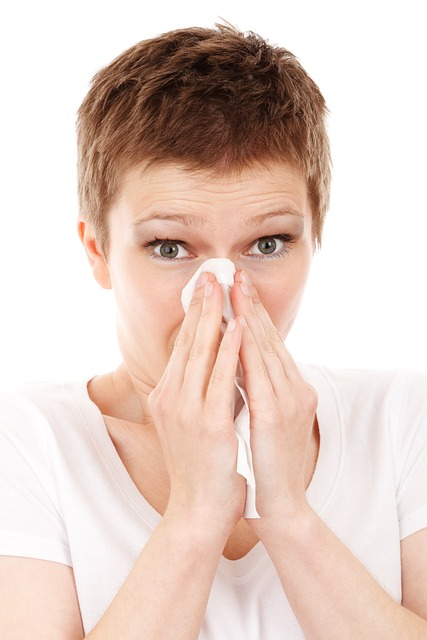
Bacterial infections
Sore throats can also be caused by bacterial infections, the most prevalent being strep throat. This infection affects the throat and tonsils and is caused by group A Streptococcus bacteria. In children, strep throat accounts for approximately 20-30% of all sore throat cases (2). Along with a sore throat, symptoms of strep throat can include trouble breathing, high fever, chills, and headache.
Other bacterial infections that can cause a sore throat include tonsilitis and a couple of sexually transmitted diseases, such as Gonorrhea.
Bacterial infections are typically treated with an antibiotic.
(Viral or bacterial infection is the most common cause of sore throat.)
Gastroesophageal Reflux Disease (GERD)
In gastroesophageal reflux disease (GERD), stomach acid backs up (refluxes) into the esophagus, the tube that transports food from the mouth to the stomach.
The resulting acid regurgitation can burn the esophagus and often the throat, causing a sore throat and other symptoms, such as heartburn, chest pain, and difficulty swallowing.
However, if you suffer from Laryngopharyngeal reflux (LPR), also known as silent reflux, a sore throat may be your only symptom.
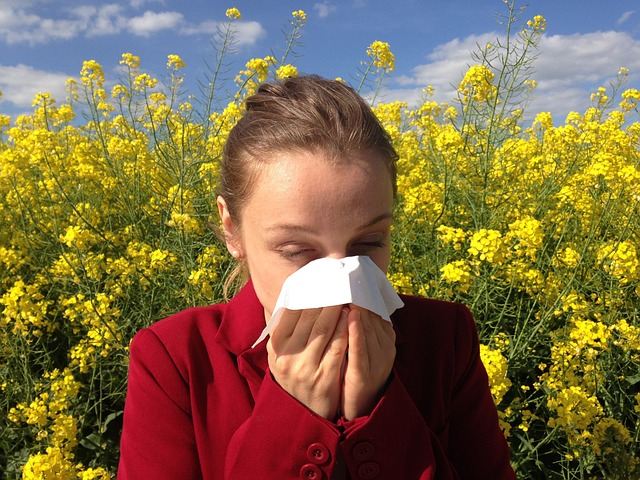
Allergies
Allergies occur when the immune system overreacts to a specific foreign substance. When allergy triggers are encountered, the immune system releases chemicals that can cause symptoms like nasal congestion, watery eyes, sneezing, and throat irritation.
Additionally, allergies can cause excess mucus in the nose that can trickle down the back of the throat, referred to as postnasal drip, and can lead to throat irritation.
Common allergy triggers include:
- Pet dander
- Dust mites
- Pollen
- Grass
- Peanuts
- Shellfish
Environmental Irritants
Various substances in the environment can also irritate the sinuses and cause sore throat, including:
- Vehicle exhaust fumes
- Air pollution
- Aerosolized sprays, such as specific cooking sprays
- Various chemicals, including popular cleaning products

Vocal Strain/Injury
Another cause of throat pain is specific injuries or getting food stuck in the throat.
Additionally, repeated use of the vocal cords and throat muscles can lead to soreness. This can happen when yelling, talking loudly, or singing for extended periods. It’s worth noting that a sore throat caused by frequent talking, often with raised voices, usually affects teachers. Singers also often experience sore throat pain after intense rehearsals or performances (3).
Cancerous Tumors
Cancerous growths in the throat, tongue, or larynx can lead to a sore throat and other symptoms such as difficulty in swallowing vocal hoarseness, and a lump in the neck.
Home Remedies For Sore Throat Relief
The following natural home remedies may help soothe sore throat pain.

1. Gargling with Saltwater
If you have a sore throat, gargling with warm salt water can be helpful in soothing it and breaking down secretions. It may also assist in reducing bacteria in the throat.
Add half a teaspoon of salt to a full glass of warm water to make a saltwater solution. Gargle with it to reduce swelling and maintain a clear throat.
The American Osteopathic Association recommends an hourly saltwater gargle for those experiencing a sore throat. You may also perform a saltwater gargle more often than once an hour (4).
2. Honey
Using honey on its own or mixed with other ingredients is commonly used to soothe a sore throat. Indeed, the numerous accounts of honey’s ability to relieve sore throat pain have been verified in reputable research studies.
Recent research found that honey is equally effective as the cough suppressant dextromethorphan in reducing coughs in children. Dextromethorphan is an active ingredient in medicines such as Robitussin and Delsym (5).
Another literature review conducted in 2021 investigated the impact of honey on acute upper respiratory tract infections. The study concluded that honey was more effective in alleviating symptoms than other treatments, which included antibiotics and the antihistamine diphenhydramine (6).
Important note: Children aged 1 and under should not be given honey due to the risk of infant botulism.
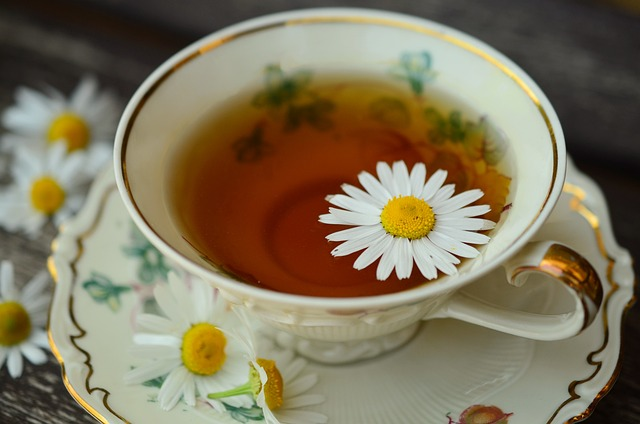
3. Chamomile Tea
Chamomile tea is a natural remedy used for medicinal purposes for a long time, especially for treating sore throats. It is one of the oldest herbal remedies known to man.
Research studies have explored the potential benefits of chamomile in treating various ailments. According to a review article published in Molecular Medicine Reports (7), it may help soothe and lubricate the throat, which can help alleviate hoarseness and pain.
Chamomile tea is known for its anti-inflammatory properties, which can reduce swelling and redness, and its antioxidant properties, which are beneficial for tissue repair and health. Chamomile’s antispasmodic action may also alleviate coughing.
If you dislike tea or don’t feel like drinking it, inhaling chamomile steam may also be beneficial.
4. Slippery Elm
The Slippery Elm tree is a valuable resource for those seeking natural remedies for sore throats. Its bark contains mucilage, which can provide a protective coating for mucus membranes.
Slippery Elm tea is an easy and effective way to ingest this herb. To make tea, mix slippery elm powder with water, which creates a gel that coats and soothes most sore throats. Slippery Elm lozenges are also available for those who prefer a more portable option.
Overall, slippery elm is a great choice for those looking for natural ways to soothe their sore throat symptoms.
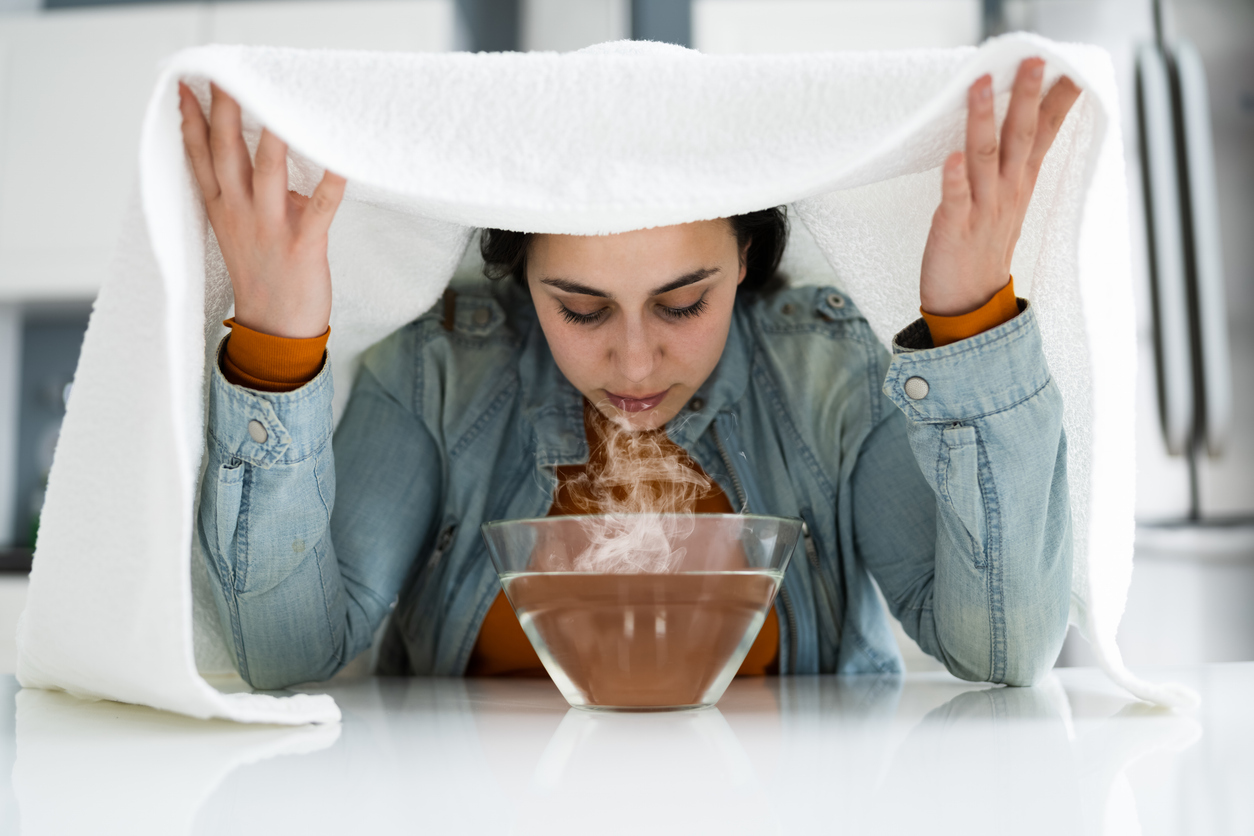
5. Steam Therapy
If you have a sore throat, dry air can make it worse. Adding moisture can be helpful.
One way to do this is by inhaling steam. To do this, pour just-boiled water into a bowl, then place a towel over your head and breathe in the steam through your nose and mouth for 10-15 minutes. You may need to add more hot water to the bowl to keep the steam going. Another option is to take a hot shower and inhale the steam in the bathroom with the door closed.
You can also use a humidifier to add moisture to the air.
6. Chicken Soup
You may have heard about using chicken soup as a remedy for respiratory and throat ailments, and there is some scientific evidence to support this traditional remedy.
According to a study from 2000 (8), specific immune cells can contribute to inflammation in a sore throat. The study tested chicken soup’s ability to reduce the migration of these immune cells, specifically neutrophils, in a laboratory setting. The results showed that chicken soup could inhibit the migration of these cells depending on the dose.
However, the researchers noted that the inhibitory activity varied among different brands of chicken soup.
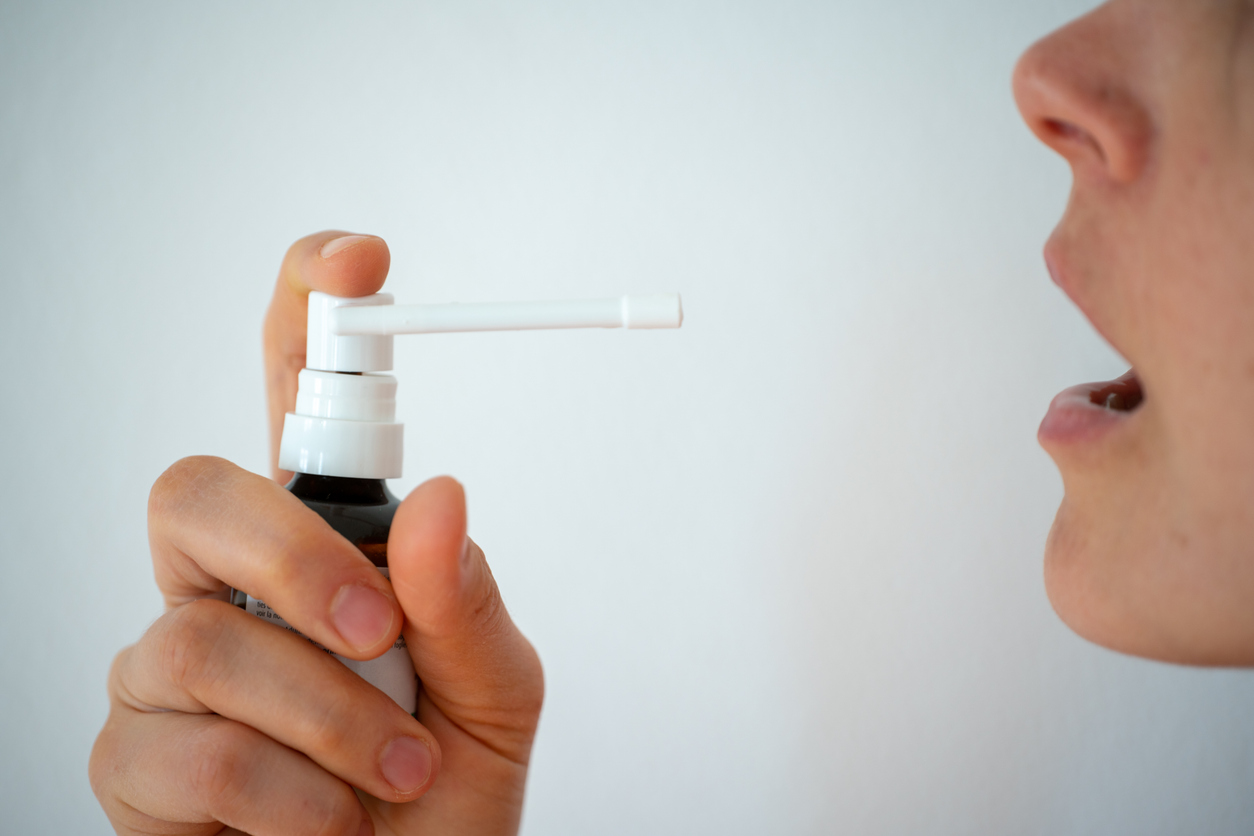
7. Echinacea and Sage Throat Spray
Echinacea has been traditionally used for treating sore throats. This substance can combat bacteria, decrease inflammation, and treat respiratory ailments (9). Studies in laboratories indicate that Echinacea purpurea has antibacterial properties against Streptococcus pyogenes, the bacteria responsible for causing strep throat (10).
Sage, a popular cooking herb, has also been found to have medicinal properties, including reducing inflammation and providing sore throat relief (11, 12, 13).
Together, echinacea and sage can be a potent weapon against sore throat pain. According to a study, a sage-echinacea spray was slightly more effective in reducing throat pain than a chlorhexidine lidocaine spray (14).
You can make make your own echinacea and sage throat spray at home by following the directions below:
- Put one teaspoon (tsp) of ground sage and one tsp of ground echinacea in a small jar.
- Boil half a cup of water, then pour over the ground sage and echinacea in the jar.
- Steep for 30 minutes.
- Pour it through a strainer.
- Transfer the mixture into a compact spray bottle. Apply the spray to your throat every two hours or as required.
8. Rest your Body and your Voice
If you are experiencing sore throat symptoms, taking a break and getting enough rest may be beneficial.
The Centers for Disease Control and Prevention (CDC) has stated that lack of sleep can increase the risk of developing infections, and even one night of severe sleep loss can lead to an increase in inflammatory proteins called cytokines (15).
It is important to note that lying flat can sometimes lead to swelling as pressure increases at the back of your throat. To avoid this, try elevating your head with some pillows to relieve any pain or discomfort.
In addition, it’s a good idea to take a vocal nap where you avoid talking for a few hours or an entire day. If you can’t stop talking, refrain from speaking loudly, singing, or yelling, as they may aggravate an already sensitive throat.

When to See a Doctor
Typically, a sore throat can be treated at home. But, if the sore throat is accompanied by a fever over 101 degrees and lasts for more than one to two days, or if you experience trouble sleeping due to swollen tonsils or adenoids, or if you develop a red rash, it’s recommended to consult your doctor.
If you have any of the symptoms listed above, it could mean a bacterial infection. In that case, an antibiotic may be needed to treat your infection.
Summary
Sore throats are typically caused by viral infections that will resolve on their own within a week. However, antibiotics may be necessary if your sore throat is due to a bacterial infection. Fortunately, there are numerous home remedies available to alleviate sore throat discomfort.
Frequently Asked Questions
How do you get rid of a sore throat naturally?
The following home remedies can help soothe a sore throat:
- Saltwater gargle
- Honey
- Chamomile tea
- Slippery Elm
- Steam therapy
- Chicken soup
- Echinacea and sage throat spray
- Body and vocal rest
How do I know if my sore throat is viral or bacterial?
Determining whether a virus or bacteria caused your sore throat is often based on the symptoms you experience. Viral sore throats typically involve coughing, throat swelling, and a runny nose. On the other hand, bacterial sore throats are usually accompanied by nausea, vomiting, stomach pain, and no cough.
Am I contagious if I have a sore throat?
Yes. Two types of germs can cause sore throats: viruses and bacteria. Both of them are highly contagious and can quickly spread to other people.
When should I go to the doctor for a sore throat?
Usually, viral sore throats get better in about five days. However, if your symptoms don’t improve or you have a fever of 101 or higher that lasts for a few days, it may be a good idea to visit your primary care physician.

- New Report Says Your Brain Could Be the Key to Reducing Phlegm Over 50
- Doctor's "Leave The Throat Phlegm Behind" Tutorial Goes Viral With People Over 50
- Can You Relieve Throat Phlegm and Coughing In 60 Seconds A Day? This Doctor Says Yes
- How To Banish Phlegm When 50+ (Do This Every Day)
References
1- https://www.cdc.gov/nchs/data/nhsr/nhsr008.pdf
2- https://www.ncbi.nlm.nih.gov/books/NBK525997/
3- https://pubmed.ncbi.nlm.nih.gov/23415149/
4- https://osteopathic.org/what-is-osteopathic-medicine/sore-throat/
5- https://journals.lww.com/ebp/Citation/2021/03000/Is_honey_better_than_dextromethorphan_at.34.aspx
6- https://ebm.bmj.com/content/26/2/57.long
7- https://www.ncbi.nlm.nih.gov/pmc/articles/PMC2995283/
8- https://pubmed.ncbi.nlm.nih.gov/11035691/
9- https://pubmed.ncbi.nlm.nih.gov/19409931/
10- https://pubmed.ncbi.nlm.nih.gov/20036523/
11- https://www.ncbi.nlm.nih.gov/pmc/articles/PMC5634728/
12- https://pubmed.ncbi.nlm.nih.gov/16504956/
13- https://pubmed.ncbi.nlm.nih.gov/16504956/
14- https://www.ncbi.nlm.nih.gov/pmc/articles/PMC3351972/
15- https://www.cdc.gov/niosh/work-hour-training-for-nurses/longhours/mod2/05.html


